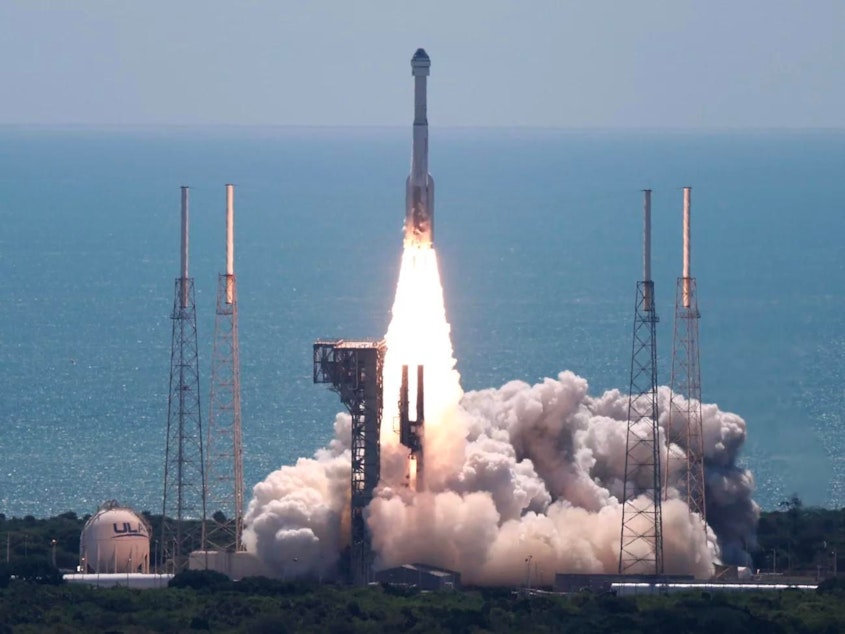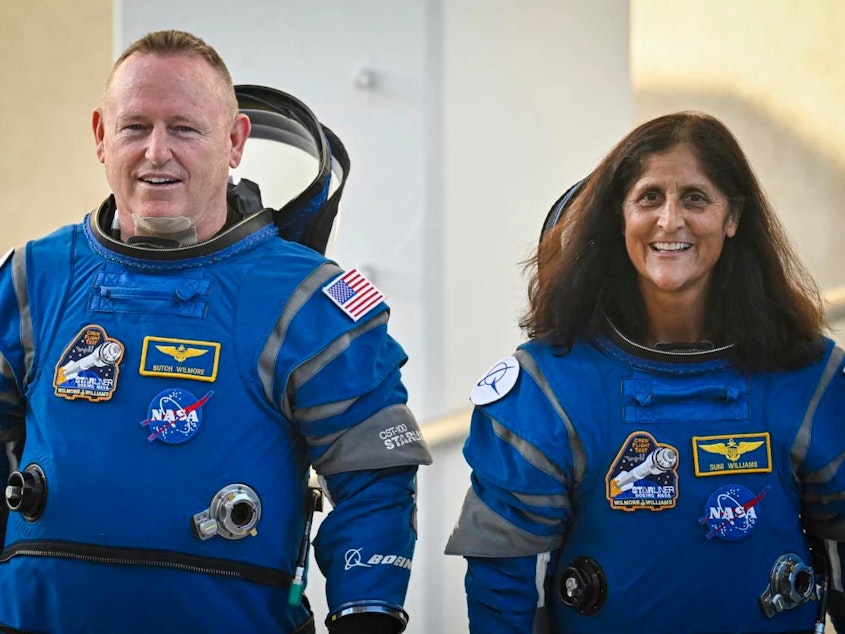After long delays, Boeing's Starliner capsule and crew launch into space

CAPE CANAVERAL, Fla. -- The third time was the charm.
Boeing’s long-delayed Starliner space capsule lifted off from the Cape Canaveral Space Force Station carrying two NASA astronauts and reached orbit about twelve minutes later. The crew will spend the next 25 hours racing to catch up to the International Space Station.
The mission marks the first time the commercially-built capsule is carrying humans, with a scheduled docking to the station Thursday around 12:15 p.m. ET, with astronauts Barry “Butch” Wilmore as commander and Sunita “Suni” Williams serving as mission pilot.
It was the third launch attempt of Starliner. On Saturday, the countdown was halted with less than four minutes left. An issue with the flight computers that control launch was to blame. Launch provider ULA replaced a power supply on the system and cleared it for Wednesday’s launch. It followed a launch attempt last month that was called off due to a misbehaving valve on the Atlas V rocket’s upper stage Centaur.
While fixing that issue, Boeing discovered another: a helium leak. The gas is used in Starliner’s propulsion system. After a review of the data, NASA was confident Boeing could successfully fly the mission.
Sponsored
With all those issues resolved, and Starliner on its way to the space station, it appears this third try is indeed the charm. Now launched, Wilmore and Williams are taking Starliner on its maiden flight, putting the vehicle through its paces ahead of operational missions for NASA. After the Space Shuttle retired in 2011, NASA partnered with two commercial companies -- Boeing and SpaceX -- to ferry astronauts to and from the space station.
But Boeing has lagged behind its commercial space transportation counterpart SpaceX, which has flown nine missions for NASA already and another four private flights. An uncrewed Starliner mission in 2019 failed to reach the station, in part due to faulty flight computer code. A re-flight of the launch in 2022 was considered a success by NASA and Boeing, but issues were later discovered in the capsule’s parachute systems.
An analysis also found tape used to manage the hundreds of feet of cabling within the spacecraft was flammable. Boeing fixed those issues and received NASA’s go-ahead to launch the crew
But that first attempt to launch this crewed mission last month was scrubbed due to an issue with the rocket responsible for giving Starliner its big boost into space.

Sponsored
Willmore and Williams will test key systems of Starliner as it docks with the space station, including life support and communication. While the spacecraft can essentially fly itself, the duo will test out manual controls of the vehicle as it approaches the orbiting outpost.
The crew will spend about a week aboard the station with a scheduled landing under a canopy of parachutes in the southwest U.S. Teams at NASA and Boeing will comb through the data from this flight before certifying the vehicle for operational mission. NASA plans to split astronaut flights between Boeing and SpaceX, with trips to the I.S.S. happening about every six months.



